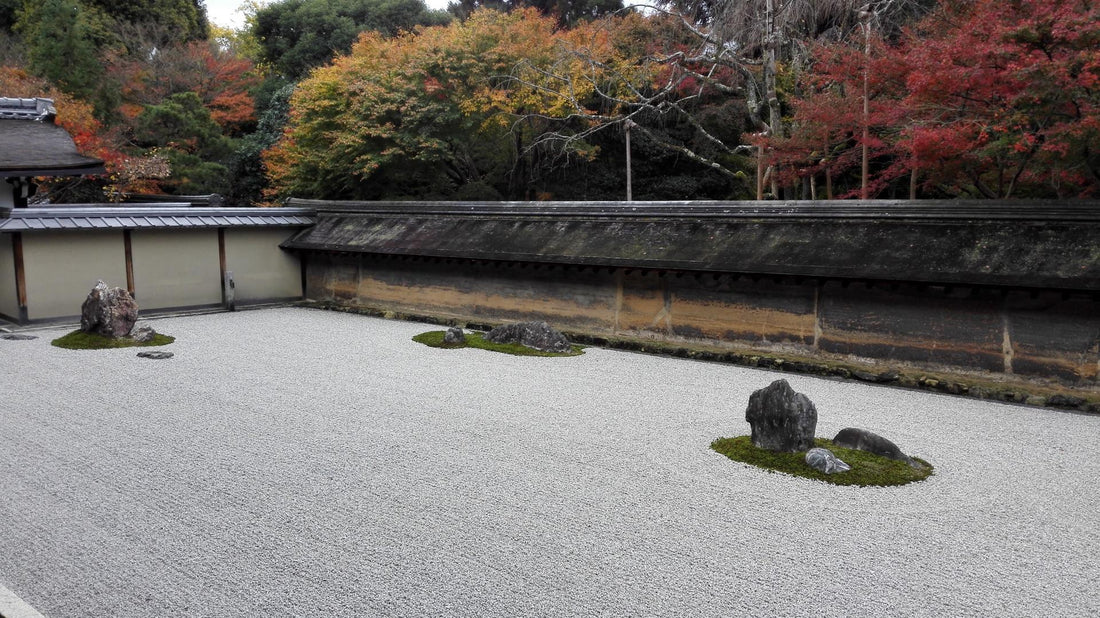The image shows a Zen garden (Karesansui) with rocks at Ryoan-ji Temple, a World Heritage Site .
I've slightly rewritten a column I wrote in 2015 for another site, titled "Why Nordic Living and Design Are Loved by Japanese People." The situation in Japan and the world has changed quite a bit since then, but I feel that the underlying themes haven't changed that much.
Marimekko / Moomin / Almedahl / Borås / Kaunisste / Klippan / Artek / Arabia / Iittala / Royal Copenhagen / Dansk / Design House Stockholm / Suunto / Georg Jensen / Fritz Hansen / Bang & Olufsen / IKEA / etc.
If you were to list popular Scandinavian brands in Japan, you'd find countless options. Moreover, compared to fashion brands from France or Italy, those related to daily life, such as furniture and home goods, are particularly prominent. This is said to be because Scandinavian and Japanese lifestyles share surprisingly many commonalities.
First of all, which countries do we usually refer to when we casually use the term "Scandinavia"?
While the kanji characters simply translate to "Northern Europe," it often specifically refers to the five countries of Finland, Sweden, Norway, Denmark, and Iceland. All of these countries sound very cold. Compared to Tokyo, the temperature is roughly 10℃ lower, so the feeling is probably that of a harsh winter from October to May.
The globally acclaimed Scandinavian interior design is believed to have emerged naturally from their geographical conditions, their lifestyle of spending most of the year indoors, and their wisdom in creating comfortable and cozy spaces within their homes. The Nordic culture, which traditionally favors a frugal lifestyle, values simple, functional, and easy-to-use items that are used for a long time. They have a national character that cherishes materials like wood and leather that gain character with age.
Japanese people also have a culture where they find virtue in a frugal and simple life, as represented by "wabi-sabi," and in living in harmony with nature, right?
Japanese Zen gardens and haiku are often described as embodying "the aesthetics of subtraction." In her book, " The Power of White Space ," ink painter Suisuu Morikawa writes about "sensing the white space, perceiving what surrounds the words, what lies behind the reality, and what is unseen; unifying oneself with nature, becoming of the same stature, and respecting nature and other lives." Personally, I feel that the "white space" perceived in the works of Japanese designers like Sori Yanagi, Daisaku Naka, Isamu Kenmochi, and Isamu Noguchi, as well as Scandinavian designers such as Alvar Aalto, Finn Juhl, Hans Wegner, and Arne Jacobsen, constitutes the "aesthetics of subtraction" in product design.
Many people, both Japanese and Nordic, have diverse thoughts and values, and I believe that many would agree that stereotypical categorization like "people of ~" is not very meaningful. I myself think so too. However, the fact that the Nordic style in Japan has permeated so deeply, rather than being a fleeting fad, leads me to believe that it's no longer just an aspiration, but rather that the simple, functional, natural, and warm lifestyle and style "fits" our lifestyles.
Reference site
Embassy of Finland : http://www.finland.or.jp/Public/default.aspx?contentlan=23&culture=ja-JP
Swedish Embassy : http://www.swedenabroad.com/ja-JP/Embassies/Tokyo/
Embassy of Norway : http://www.norway.or.jp/
Embassy of Denmark : http://japan.um.dk/ja.aspx
Icelandic Embassy : http://www.iceland.is/iceland-abroad/jp/






